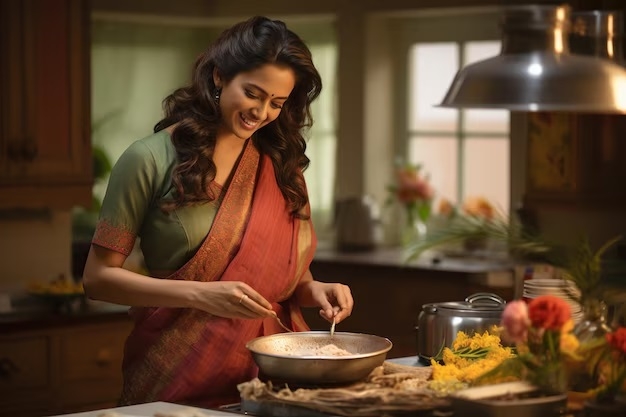Enjoy ‘Home Food’ for better health
| Date :07-May-2024 |

By Dr Shubhangi Deshmane :
Gone are the days when our mothers and grandmothers use to serve us daily a complete meal in a traditional thali. Served on a platter it usually comprised of pickle, salad/raita, papad, yoghurt/kadhi, lentils, sprouts, vegetables roti and rice with a spoonful of homemade ghee. Who has the time and patience to prepare and eat all these items now? To save time and energy most of the Indian families these days resort to eating one simple dish at a time. Our traditional khichdi-kadhi is gradually getting replaced by pasta or noodles with lots of tomato ketchup. No wonder the thin and lean people are fast disappearing, their place being taken by podgy figures these days. This not so healthy body constitution is seen at all ages including children and in all socioeconomic classes. This change in the appearance is greatly attributed to the changing lifestyle and food culture, as has been rightly pointed out by Mr. Vijay Phanshikar in his regular column of Loud Thinking.
In the rural areas mechanisation with lack of physical labour and overeating due to ready availability of free ration may be the culprit. In the urban setup, enjoying satvik ahar at home has become old fashioned. Dining out in swanky restaurants or on any tapris has become quite common. Since the demand has increased there is a spurt in eating joints all around the city mostly occupying the footpaths. Panipuri to Pizzas are enjoyed by all irrespective of the age or class. The frequent kitty parties attended especially by woman has resulted in consumption of high
sugar, high calorie processed food.
The food delivery service providers
are flourishing since there are many who dislike the bland home food. Delicious food items ordered from outside served at the doorstep are highly convenient. Eating highly processed hot food packed in plastic, Styrofoam or cardboard containers can pose health risks, the disposal of which contribute to environmental pollution.
In the last 40 years of my practice, I have seen a sea of change in the type of patients seen. Malnourished females seen initially are being replaced by obesity and its related issues along with nutritional deficiencies. Hormonal disturbances with irregular menstrual cycles (PCOD), infertility, diabetes and cancers are on the rise especially in the relatively younger generation. When asked about their lifestyle and food habits, each patient has the same story to tell. Sleeping and getting up late, no physical activity, stressful jobs, substance abuse and faulty eating habits are the reasons given.
India is home to the second highest number of diabetic patients within the age group of 20 to 80 years. Socioeconomical and technological advancement with affluent lifestyles significantly impacts insulin sensitivity. A simple trick to avoid this deadly disease and its repurcussions is to keep eating and enjoying traditional high fiber meals. Adopting rich Indian practices like yoga and meditation in one’s daily schedule can help. Such an endeavor would assure us that the epidemic of diabetes with its related complications is addressed and the burden of disease on healthcare is significantly reduced.